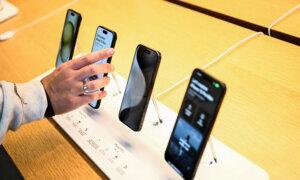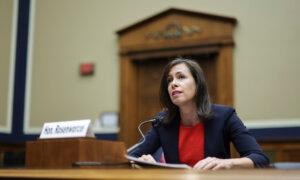Schools and libraries would lend out Wi-Fi hot spots to users who don’t have internet access at home.
Now that the Affordable Connectivity Program is insolvent, the Federal Communications Commission (FCC) is pitching another way to provide internet service to low-income students when school is out: Let them “borrow” Wi-Fi hot spots from public schools and libraries.
The FCC will vote on the proposal at its July 18 meeting.
A June 27 outline of the plan justifies the measure as a way to help financially disadvantaged students who are at risk of falling behind at school because their families can’t afford residential internet service.
The program would provide portable routers that access cellular signals provided to schools and libraries at a discounted rate based on their size and the income levels of the populations they serve. According to the FCC’s June 27 outline, the proposed ratio is 20 hot spot routers per 100 students for schools and 5.5 hot spots per square foot of building size.
The routers would be for use with existing devices, such as laptops or tablets. The cost for a school with 500 students that serves a low-income population would be about $56,700 over three years, for example, while a large public library in the same type of community could receive as much as $315,000 between 2025 and 2027, according to the FCC outline.
The FCC outline did not list an estimated total cost of the plan.
“It should be the standard practice that students or anyone who can’t afford Internet at home can check out a Wi-Fi hot spot from their local library,” FCC Chairwoman Jessica Rosenworcel stated in a June 26 news release. “This update is how we’ll help close the Homework Gap and support folks on the wrong side of the Digital Divide so they can fully participate in modern civic and commercial life.”
The FCC stated that it expects E-Rate program recipients to post acceptable use policies and assure internet safety for children, and apply the appropriate filters to restrict access to harmful content, including social media.
As with books, libraries and schools would also need to establish lending periods, which are typically about 21 days, the June 27 FCC document noted. This arrangement is different than the one-to-one device per student ratio that is typical at public schools, but not every student lacks internet service at home.
Some Dissent From Commissioners
The $14 billion Affordable Connectivity Program was intended as a temporary measure when schools across the country retreated to remote learning because of the COVID-19 pandemic. It benefited more than 23 million people. The federal government gave income-eligible families between $30 and $70 per month for broadband services until the fund was exhausted.
The FCC’s E-Rate program provides discounted broadband services to public schools and libraries, but it has not supported technology that allows students and users to take advantage of those services off-premises after the facilities are closed, according to the June 27 outline.
In October 2023, the FCC approved expanded E-Rate functions to include Wi-Fi internet service on school buses starting July 1.
On June 6, by a vote of 3–2, the FCC approved a cybersecurity pilot program that earmarks $200 million from its Universal Services Fund to defray the costs of services and equipment for K–12 districts and libraries to protect data and broadband networks, according to the agency’s website As the learning institutions spend their grants, also funded by the E-Rate program, the FCC will evaluate what works and what doesn’t, with the larger goal of identifying best practices for cybersecurity measures in school communities before the start of the 2027–28 academic year.
With two of the five commissioners consistently opposing expansions to the E-Rate program, the FCC can expect another close vote on this measure on July 18. When federal funding of mobile hot spots was first suggested at the agency’s November 2023 meeting, commissioners Brendan Carr and Nathan Simington called the idea lawless and wasteful.
“In fact, 95 percent of teenagers already have access to a smartphone,” Mr. Simington said on Nov. 1, according to the meeting minutes. “And almost every new smartphone supports mobile hot spot capability. This is a solution—a very expensive solution—in search of a problem.”
Representatives from Internet Safety Labs (ISL), a nonprofit agency that tests ed-tech tools and platforms and reports on vulnerabilities, declined to speak with The Epoch Times on this matter, noting that they need more time to research the FCC’s proposal. But ISL published reports have shown a multitude of privacy concerns related to online activity for school purposes.
ISL’s 2022 surveys from 663 U.S. schools indicated that most schools do not communicate with parents regarding privacy concerns, even though 96 percent of school-approved applications share student information with third parties.
Original News Source Link – Epoch Times
Running For Office? Conservative Campaign Consulting – Election Day Strategies!


